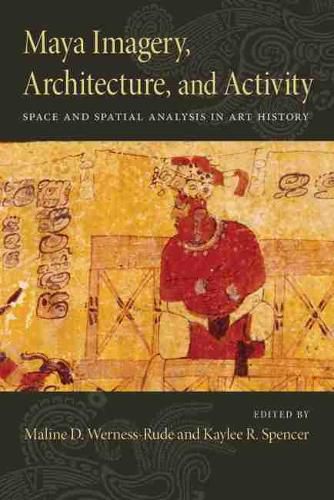Readings Newsletter
Become a Readings Member to make your shopping experience even easier.
Sign in or sign up for free!
You’re not far away from qualifying for FREE standard shipping within Australia
You’ve qualified for FREE standard shipping within Australia
The cart is loading…






Maya Imagery, Architecture, and Activity privileges art historical perspectives in addressing the ways the ancient Maya organized, manipulated, created, interacted with, and conceived of the world around them. The Maya provide a particularly strong example of the ways in which the built and imaged environment are intentionally oriented relative to political, religious, economic, and other spatial constructs.
In examining space, the contributors of this volume demonstrate the core interrelationships inherent in a wide variety of places and spaces, both concrete and abstract. They explore the links between spatial order and cosmic order and the possibility that such connections have sociopolitical consequences. This book will prove useful not just to Mayanists but to art historians in other fields and scholars from a variety of disciplines, including anthropology, archaeology, geography, and landscape architecture.
$9.00 standard shipping within Australia
FREE standard shipping within Australia for orders over $100.00
Express & International shipping calculated at checkout
Maya Imagery, Architecture, and Activity privileges art historical perspectives in addressing the ways the ancient Maya organized, manipulated, created, interacted with, and conceived of the world around them. The Maya provide a particularly strong example of the ways in which the built and imaged environment are intentionally oriented relative to political, religious, economic, and other spatial constructs.
In examining space, the contributors of this volume demonstrate the core interrelationships inherent in a wide variety of places and spaces, both concrete and abstract. They explore the links between spatial order and cosmic order and the possibility that such connections have sociopolitical consequences. This book will prove useful not just to Mayanists but to art historians in other fields and scholars from a variety of disciplines, including anthropology, archaeology, geography, and landscape architecture.